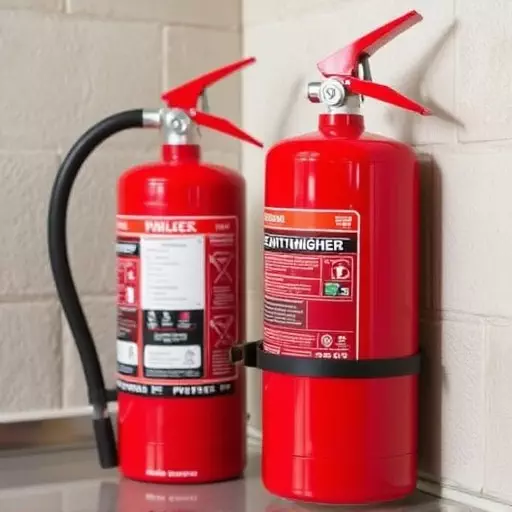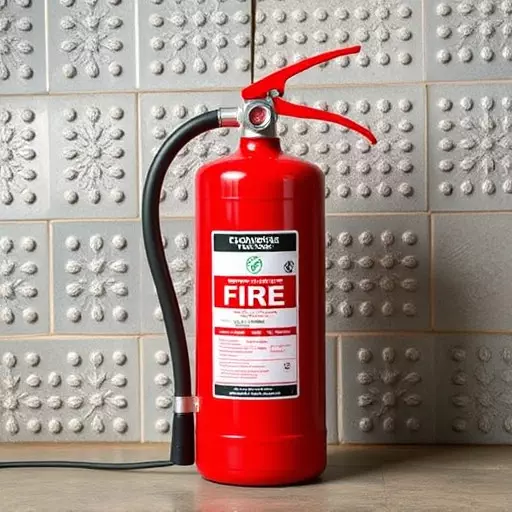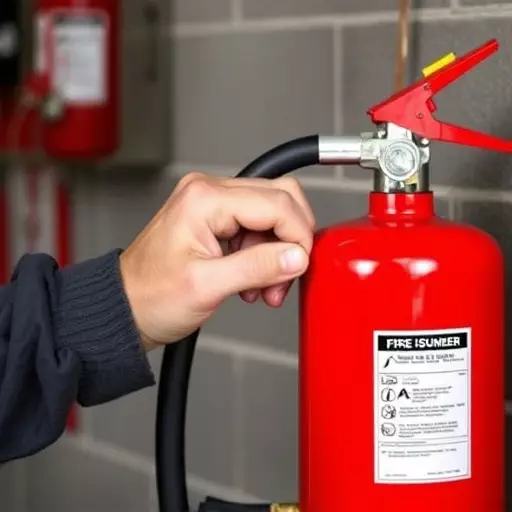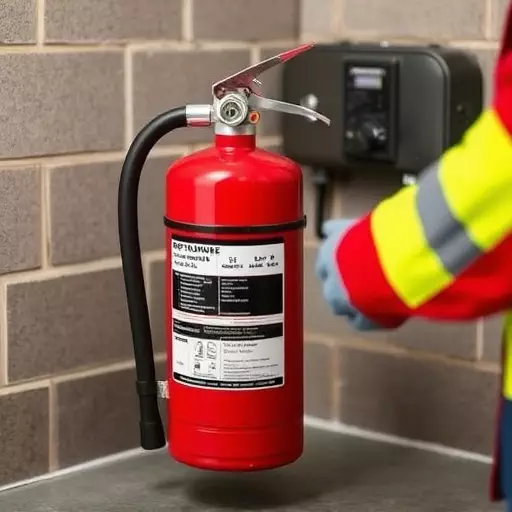The article emphasizes the critical importance of comprehensive Fire Extinguisher Training in Spring Lake to empower residents with the practical skills needed to confidently manage fire emergencies. This training program includes hands-on experience with different types of fire extinguishers, teaching participants how to recognize various fire classes and respond appropriately. Regular maintenance and timely repairs are also highlighted as essential for the efficacy of fire extinguishers. The fire extinguisher repair process in Spring Lake involves a thorough inspection by certified professionals to identify issues like low pressure, leaking agents, or physical damage, followed by necessary repairs or replacements. Fire extinguishers must undergo a series of checks and recharging, with all parts disassembled, cleaned, and recalibrated according to industry standards to ensure they operate reliably during emergencies. The article also outlines the signs that indicate when a fire extinguisher needs repair, such as a low pressure gauge or physical damage, stressing that these issues should be addressed promptly to maintain safety. By adhering to the Fire Extinguisher Training principles and following a systematic repair process, Spring Lake can ensure its fire extinguishers are in optimal condition, significantly enhancing preparedness and safety for the community.
fire extinguisher training spring lake, fire extinguisher repair process, maintenance, safety, efficiency
When it comes to safeguarding properties and lives from the ravages of fire, fire extinguishers stand as our first line of defense. Yet, their effectiveness hinges on proper functioning, which necessitates regular maintenance and occasional repair. This article delves into the intricacies of the fire extinguisher repair process, guiding readers through the essentials of fire extinguisher training in Spring Lake and the pivotal signs that a fire extinguisher may need attention. We’ll explore the comprehensive steps involved in professional repairs to ensure both safety and efficiency.
- Mastering Fire Extinguisher Training in Spring Lake: Understanding the Fire Extinguisher Repair Process
- Spotting the Signs a Fire Extinguisher Needs Attention: A Comprehensive Guide to Maintenance and Repair
- Step-by-Step: The Professional Fire Extinguisher Repair Process Ensuring Safety and Efficiency
Mastering Fire Extinguisher Training in Spring Lake: Understanding the Fire Extinguisher Repair Process

In Spring Lake, ensuring that fire safety protocols are up-to-date and effectively implemented is paramount for both residential and commercial properties. The Fire Extinguisher Training program in Spring Lake equips individuals with the necessary skills to handle fire emergencies confidently and competently. This training goes beyond theoretical knowledge; it includes hands-on practice with various types of fire extinguishers, ensuring participants are well-versed in recognizing different fire classes and the appropriate response for each. Understanding how to use a fire extinguisher correctly can save lives and property, making this training an indispensable part of fire safety preparedness.
The repair process for fire extinguishers is a critical component of maintaining an effective fire suppression system. It involves meticulous inspection and evaluation of the unit to ensure it functions as intended under stress. Key signs that indicate a fire extinguisher may need repair include low pressure readings, leaking agents, and any physical damage to the cylinder or hose assembly. Certified professionals follow a standardized protocol to diagnose and rectify these issues, which typically includes disassembling the extinguisher, inspecting all components for wear and tear, checking the integrity of seals and gaskets, and verifying that pressure and agent levels meet manufacturer specifications. This diligent approach ensures that fire extinguishers are ready to be deployed in an emergency, thereby upholding the safety standards set forth by regulatory bodies. Regular maintenance and timely repairs are essential to guarantee the effectiveness of these lifesaving devices.
Spotting the Signs a Fire Extinguisher Needs Attention: A Comprehensive Guide to Maintenance and Repair

When it comes to fire safety, ensuring that your fire extinguishers are in optimal working condition is paramount. Regular maintenance can prevent malfunctions during emergencies. To maintain the efficacy of your fire extinguisher, it’s crucial to be vigilant and spot any signs that indicate it may need attention. A visual inspection should be conducted routinely to check for physical damage or corrosion on the exterior of the extinguisher. The pressure gauge is a critical component; it must indicate the correct pressure as per the manufacturer’s specifications. If the gauge reads below the recommended PSI, or if it’s stuck in one position, professional repair or replacement is necessary. Additionally, inspect the seals and hoses for any signs of wear, cracks, or tears. A compromised seal could lead to a loss of pressure over time, rendering the extinguisher ineffective when most needed. The fire extinguishing agent inside should also be examined; some extinguishers use chemical agents that can degrade or become less potent with time. If the agent appears discolored or if it’s unstable within the cylinder, it’s a clear indication that the fire extinguisher requires servicing by qualified professionals. In Fire Extinguisher Training Spring Lake and similar programs, these signs are thoroughly covered to ensure participants recognize them early. Recognizing these indicators is the first step in the fire extinguisher repair process, which involves disassembling the unit, cleaning or replacing parts, recharging the cylinder with fresh agent, and recalibrating the pressure gauge. This meticulous process should only be performed by certified technicians who follow industry standards to ensure the fire extinguisher functions correctly in an emergency situation. Regular maintenance and timely repairs can significantly enhance the chances of effectively controlling a fire outbreak, making the investment in professional servicing a wise choice for any business or institution.
Step-by-Step: The Professional Fire Extinguisher Repair Process Ensuring Safety and Efficiency

When a fire extinguisher falls into disuse or is involved in an incident, it’s imperative to assess its condition and determine if it requires repair or replacement. The fire extinguisher repair process is a series of meticulous steps carried out by trained professionals adhering to Fire Extinguisher Training principles in Spring Lake. This ensures that the equipment functions optimally and meets safety standards when needed most.
The first step involves a thorough inspection to identify any obvious signs of wear, damage, or malfunction. Technicians look for dents, corrosion, cracked gauges, or valve issues. If a fire extinguisher shows no outward signs of trouble but is not functioning as expected, internal evaluation is necessary. This includes disassembling the unit to inspect and test its components. Each part, from the pressure cylinder to the seals and hose, undergoes a detailed examination for leaks or obstructions that could impede performance. Should any defects be found, the affected components are replaced with new parts sourced from reputable manufacturers. After repairs are completed, the fire extinguisher is reassembled, pressurized, and tested to ensure it operates as intended. This includes simulating discharge in a controlled environment to verify that it extinguishes fires effectively without any leaks or functional irregularities. Throughout this process, safety is paramount; professionals follow strict protocols to prevent accidents during the repair and subsequent testing phases. By adhering to these steps, fire extinguishers are not only restored to their operational best but also contribute significantly to maintaining a safe environment for individuals and businesses in Spring Lake. Recognizing the signs a fire extinguisher needs repair is crucial for early intervention and avoiding potential hazards that could arise from an unreliable fire suppression system.


